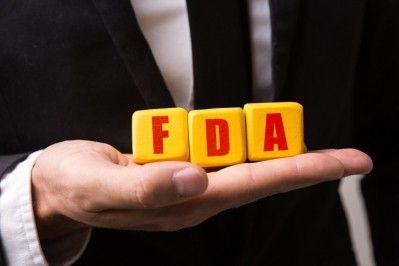US feed industry given guidance on FSMA preventive controls

The US Food and Drug Administration (FDA) also is seeking feedback on the first five chapters of the draft guidance.
The publication was developed to help feed producers establish a feed safety plan to reduce or prevent hazards that could cause illness or injury.
“You only need to apply preventive controls if, after conducting a hazard analysis of each type of animal food manufactured, processed, packed, or held at your facility, you determine there are known or reasonably foreseeable biological, chemical, or physical hazards that require a preventive control,” said the FDA. “We do not expect that all known or reasonably foreseeable hazards for an animal food require a preventive control in all facilities.”
Comments on the guidance draft are set to be collected for 180 days, through July 23, the agency said.
“Last year, the FDA announced that it intends to delay routine preventive controls inspections for large businesses until fall 2018 to allow the animal food industry more time to focus on development of their food safety plans and to consider information in the draft guidance."
Small businesses have until September 2018 and very small business have until the same month in 2019 to become compliant with aspects of the rule, the agency said.
However, it is important for producers to be aware of the predictable or known hazards that could be found with feed, production processes and manufacturing facilities, the agency said.
There also is set to be additional guidance provided related to feed preventive control provisions that will be published later, said the agency. The later document is set to include an in-depth guidance on the preventive control system in relation to the supply chain.
Guidance specifics
The current draft guidance covers several provisions of the rule including food safety plan specifications; suggestions for conducting a hazard analysis; examples of preventive controls that could be used, elements of preventive control management; and hazards linked to the generation, packing, processing and storage of animal feed, the FDA said.
“Establishing risk-based preventive controls designed to protect your animal food and the consumer (humans purchasing the animal food and animals consuming the food) from biological, chemical (including radiological), and physical hazards, enables you to apply a proactive and systematic approach to your food safety program,” the agency said. “Risk-based preventive controls will not give you a zero-risk system for manufacturing, processing, packing, and holding animal food; rather, risk-based preventive controls are designed to minimize the risk of known or reasonably foreseeable animal food hazards that may cause illness or injury to humans or animals if they are present in the animal food you produce.”
Within the draft guidance document, the focus on elements of the food safety plan was designed to help producers understand what a safety plan is and what a facility needs to develop to create a written food safety plan, the agency said.
Similarly, a chapter of the draft guidance is dedicated to aiding facilities in conducting a hazard analysis, the agency said. The analysis also has to be written and needs to include the identification of hazards and an evaluation of those hazards to establish if they require a preventive control.
Another chapter of the draft document highlights a series of known hazards to help producers consider biological, chemical and physical hazards that might be relevant to the work they are doing with animal feed, the agency said.
“It is important for you to understand the hazards that may be associated with your products using the raw materials and other ingredients, processes, and equipment specific for those products, as well as the environment of your specific facility,” said the FDA. However, the list of hazards and related details is not considered all-inclusive, it added.
A section dedicated to preventive controls was intended to provide more information on how to select and use the practices, the agency said. “This chapter provides an overview of common preventive controls that you could use to significantly minimize or prevent the occurrence of biological, chemical, and physical hazards in animal food and the animal food production environment when the outcome of your hazard analysis is that one or more known or reasonably foreseeable hazards requires a preventive control,” it added.
The draft also offers a look at way to manage elements of the preventive control included in a facility’s safety plan, the agency said. These include steps like corrective actions, verification processes, monitoring and associated records.
The goal of the management side is to ensure that the identified preventive controls are effective, the agency said.














